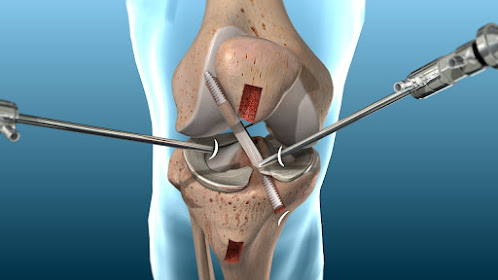Anterior Cruciate Ligament (ACL) injuries are among the most common sports-related injuries, especially in athletes and physically active individuals. When the ACL tears completely, it often requires surgical repair through a procedure known as ACL reconstruction surgery. One of the first questions patients ask is: “How long does it take to recover from ACL reconstruction?”
The recovery process is not the same for everyone. It depends on several factors such as the severity of the injury, age, overall health, the type of surgery performed, and the patient’s commitment to rehabilitation. In this blog, we’ll provide a detailed look at the recovery timeline, stages of healing, and important tips to ensure a successful return to daily activities or sports.
🔹 Understanding ACL Reconstruction
The ACL is one of the key ligaments that stabilize the knee joint. A torn ACL can cause instability, pain, swelling, and difficulty in performing activities that involve sudden stops, twisting, or jumping.
ACL reconstruction involves replacing the torn ligament with a graft, usually taken from the patient’s hamstring, patellar tendon, or sometimes from a donor. After surgery, the body gradually incorporates the graft into the knee, making it function like the original ligament.
Since the surgery requires healing of both the knee joint and the graft, recovery is a long but structured process.
🔹 Factors That Affect Recovery Time
When asking, “How long does it take to recover from ACL reconstruction?”, it’s important to consider that recovery is not just about the surgery but also about rehabilitation and lifestyle adjustments. The following factors can influence recovery time:
Age – Younger patients may heal faster compared to older individuals.
Overall Health – A healthy lifestyle and good nutrition promote quicker healing.
Type of Graft Used – Hamstring grafts may take slightly longer to heal compared to patellar tendon grafts.
Extent of Injury – If there are associated injuries like meniscus tears, recovery may take longer.
Rehabilitation Program – Regular physiotherapy plays the most important role in speeding up recovery.
Commitment of the Patient – Following exercise routines, rest, and medical advice strictly can reduce recovery time.
🔹 ACL Reconstruction Recovery Timeline
Let’s break down the recovery stages to answer the big question: How long does it take to recover from ACL reconstruction?
✅ Week 1 – 2: Immediate Post-Surgery Phase
Focus is on reducing pain, swelling, and regaining gentle movement.
Patients may use crutches and a knee brace.
Ice therapy and pain management are essential.
Simple exercises such as ankle pumps, quad sets, and gentle heel slides are introduced.
✅ Week 3 – 6: Early Rehabilitation
Gradual weight-bearing is encouraged.
Flexibility and strengthening exercises increase.
Swelling starts to reduce, and the patient regains more control of knee movement.
Stationary biking and light physiotherapy exercises may begin.
✅ Month 2 – 3: Regaining Strength
Patients walk more comfortably without crutches.
Focus shifts to improving quadriceps and hamstring strength.
Range of motion should be close to normal.
Balance and proprioception (joint awareness) exercises are introduced.
✅ Month 4 – 6: Returning to Daily Activities
Most patients can walk, climb stairs, and do light activities without difficulty.
Running or jogging may be allowed by the doctor after careful evaluation.
Focus is on endurance training and advanced strengthening exercises.
✅ Month 6 – 9: Sports-Specific Training
For athletes, sport-specific drills and functional exercises are introduced.
Jumping, cutting, pivoting, and agility training become part of rehab.
Knee stability continues to improve.
✅ Month 9 – 12: Full Return to Sports/Activities
Most patients can return to sports by 9–12 months, depending on recovery progress.
A doctor’s clearance is mandatory before resuming high-impact activities.
Continuing strengthening and stability exercises is crucial to avoid reinjury.
👉 On average, it takes 9–12 months for a complete recovery after ACL reconstruction.
🔹 Do’s and Don’ts During Recovery
✅ Do’s:
Follow your physiotherapist’s instructions carefully.
Use ice packs to control swelling.
Eat a protein-rich, nutritious diet for faster healing.
Stay consistent with exercises even when progress feels slow.
❌ Don’ts:
Don’t rush into sports before your doctor gives clearance.
Avoid skipping physiotherapy sessions.
Don’t ignore pain or swelling—it could indicate complications.
Avoid high-impact movements too early in recovery.
🔹 Tips for a Smooth Recovery
Set Realistic Goals – Recovery is gradual; don’t compare your progress with others.
Stay Active (Safely) – Engage in low-impact exercises such as swimming or cycling after medical approval.
Maintain Good Posture – Poor walking or running posture can stress the knee.
Regular Check-Ups – Keep in touch with your orthopedic surgeon for progress evaluation.
Mental Health Matters – Stay positive, as long recoveries can feel frustrating.

